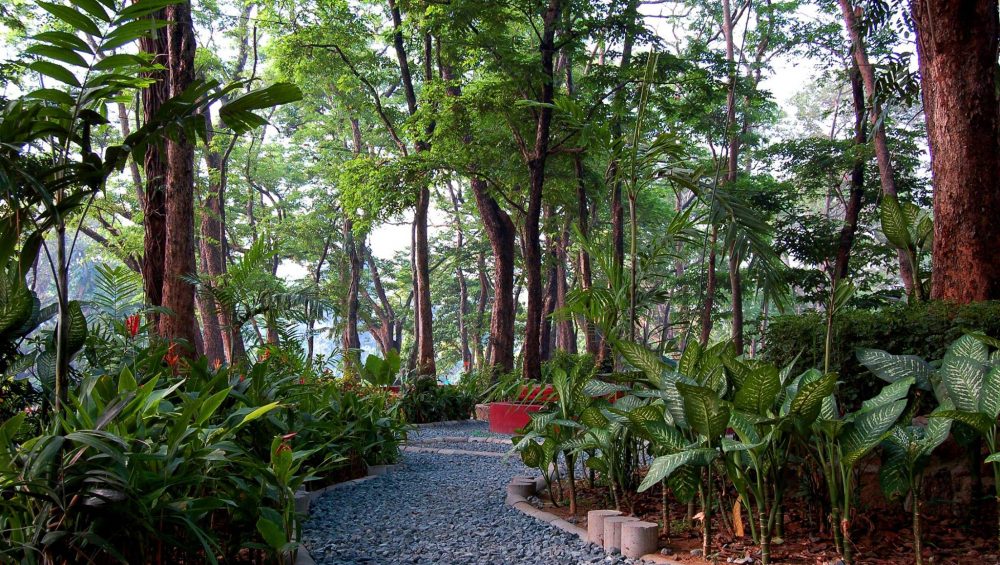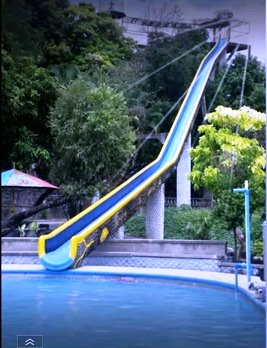The New Caloocan
If you’re currently living in Metro Manila or you wish to invest in the National Capital Region, you might want to explore the historic city of Caloocan (or Kalookan), a first-class highly urbanized city located in the northern part of NCR. Among the 33 highly urbanized cities, Caloocan City is the fourth most populous in the country next to Quezon City, City of Manila and Davao City, according to data from the Philippine Statistics Authority.
This bustling place is home to a plethora of booming businesses, malls, universities, hospitals, major infrastructures and other attractions. Most importantly, people in this area will soon have access to the Metro Rail Transit Line 7 (MRT-7), which is expected to open in 2022. This makes owning an affordable condo in Caloocan a wise choice.
The 5,333.40-hectare city is divided into two geographical areas: the North and South Caloocan. North Caloocan shares its borders with Quezon City, Valenzuela and the province of Bulacan while South Caloocan is bordered by the City of Manila, Quezon City, Malabon, Navotas and Valenzuela.
The Vivid History of Caloocan
Caloocan City used to be a humble barrio in the town of Tondo. Spanish colonizers then called it “Aromahan” or “Libis Espina” because it is located in a “libis” or lowland. Another famous folk story about its name’s origin is that it came from the Tagalog word “look” (bay) due to its proximity to Manila Bay or “sulok” (corner) because it is situated where the old towns of Tondo and Tambobong meet.
A significant part of the Filipinos’ history during the 1896 Philippine Revolution, Caloocan became the venue for meetings held by Andres Bonifacio, leader of the Katipunan secret society that spearheaded the uprising against Spain, and his men. It was also the center of activities and milestones for the Katipuneros and a place where they had their first encounter with the Spanish forces.
Be a Tourist in your Own Home
The pandemic has changed the way we travel. With the ongoing quarantine restrictions all over the world, our life-changing journeys to foreign lands have been paused as we learn to appreciate the beauty and simplicity of our own hometowns.
Exploring safe open spaces and interesting places around our neighbourhood without going far away from home seems to be the trend nowadays. After all, there is so much to discover about our own city if only we’ll see it with fresh eyes.
For your next visit, we came up with some of the best things to do in this part of the metropolis, so let’s begin our nostalgic and exciting road trip to Caloocan City:
1. Pay Tribute To The Supremo
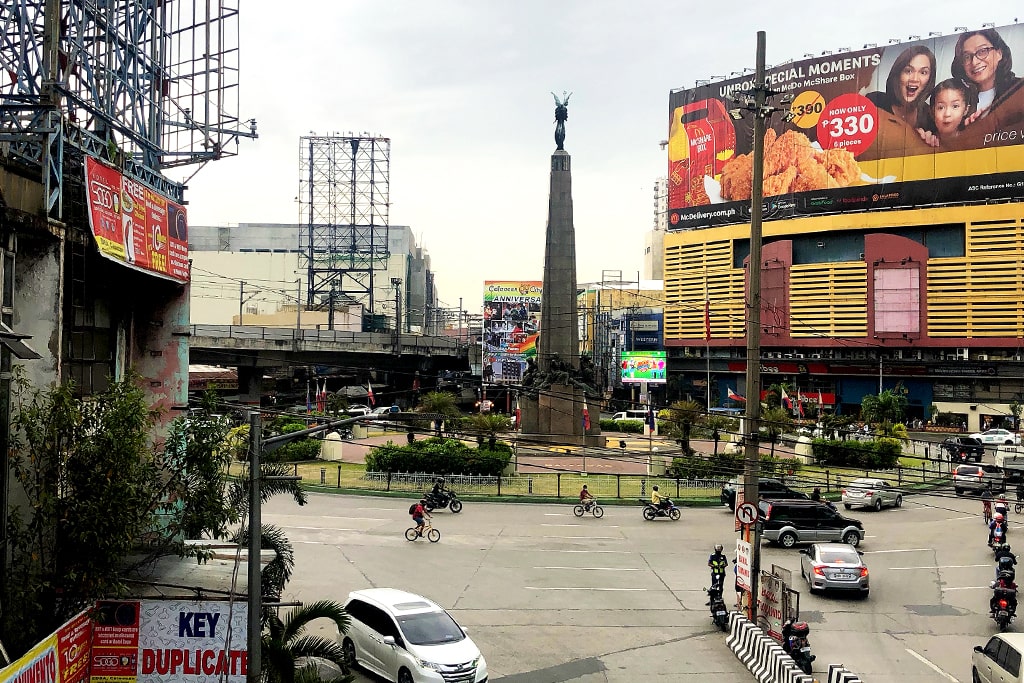
Game for some history lessons? Come and see the Bonifacio Monument—one of the country’s most iconic landmarks—to honor the “Father of the Philippine Revolution” and the supreme leader of the Katipunan movement, Andres Bonifacio.
The 45-foot obelisk made of granite with a winged figure of Victory on top, as well as the 23 bronze figures that depict a narrative of the revolution, commemorates the triumph of the Filipinos over the Spaniards. You need not be a tourist or a student on a field trip to gaze at this historical treasure, a memorial to the heroic deeds of the Supremo.
The figures include Bonifacio (also called the “Great Plebeian”), Emilio Jacinto (a young general known as the “Brains of the Katipunan”), GomBurZa (the three martyred priests executed by the Spanish oppressors through garrote) and the other Katipuneros. The octagon base stands for the first eight provinces that rose up against Spain, which were also represented by the eight rays of the Katipunan flag. Meanwhile, It is believed that the three steps that lead to the structure symbolize the three centuries of Spanish colonization.
Bonifacio’s soaring monument is tucked at the heart of a rotunda in Caloocan City that connects Edsa, Rizal Avenue, Samson Road and MacArthur Highway. This 200-square meter masterpiece designed by National Artist Guillermo Tolentino was inaugurated in 1933 during the 70th birth anniversary of the Supremo.
So the next time you ride the Light Rail Transit (LRT) Line 1 and get off at Monumento Station, make sure to take a moment to appreciate this sculptural tribute to one of the bravest Filipino heroes who fought valiantly for our nation’s freedom.
2. Pray at the San Roque Cathedral
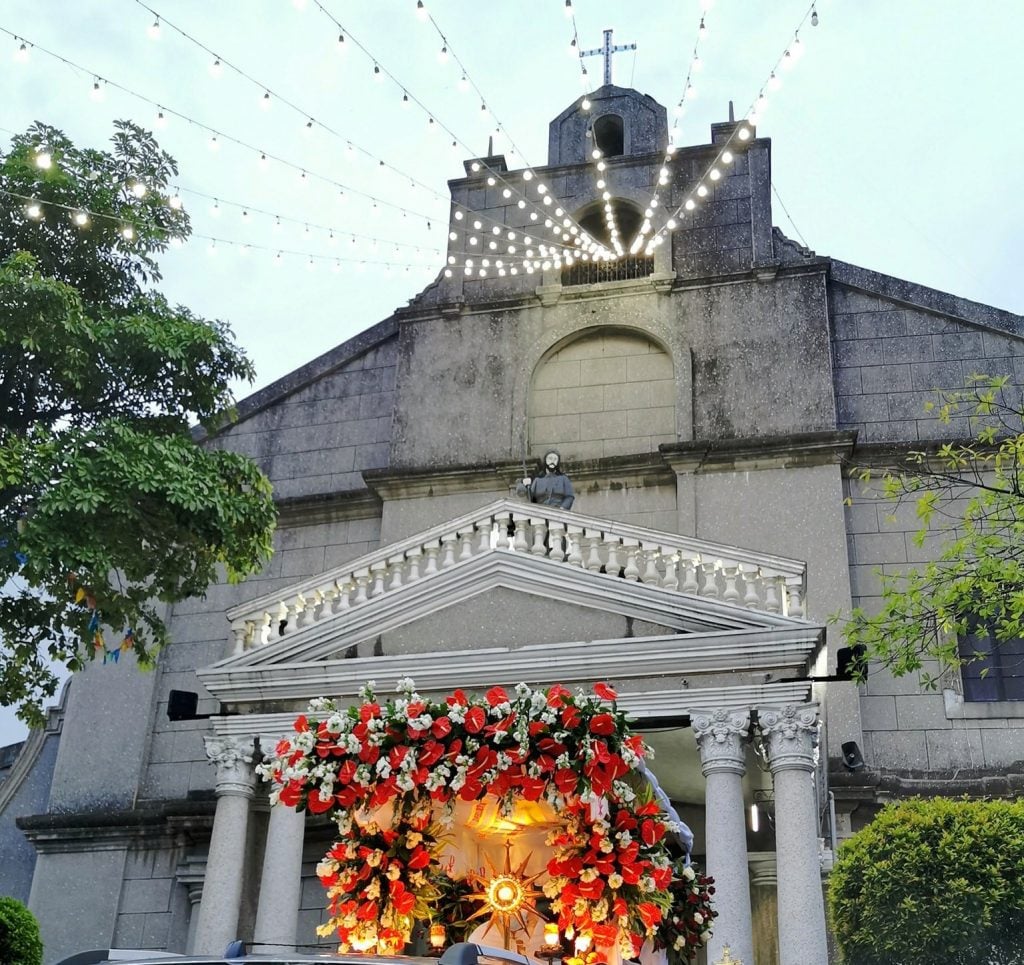
Declared as a national landmark and shrine for history, freedom and independence, the San Roque Cathedral has come a long way from being a small chapel in Sitio de Espinas to the center of faith and worship among the residents of Caloocan City.
The original structure was built in 1765 by Rev. Fr. Manuel Vanquero with the help of the people. He donated the statues of San Roque and the Nuestra Señora de la Nieva from Talavera, Spain to the community. In 1815, San Roque Parish was canonically erected and separated from Santo Niño de Tondo Parish. The building was transferred to its present location, then called Paltok.
The church was a witness to the country’s quest for freedom from its colonizers. It served as the meeting place of the Katipuneros who marched to Balintawak to wage a revolution against the Spaniards. The San Roque Parish also became one of the staging camps of Gen. Antonio Luna in 1899 to fight the American forces during the Filipino-American war. When the Gen. Arthur McArthur-led Americans took control of Caloocan, the church was made into a regiment camp with Col. Frederick Funston as the commander.
The parish went through renovations and restorations after the war. In 2000, it was named as one of the Jubilee Churches in the Archdiocese of Manila. After three years, Pope John Paul II created the Diocese of Kalookan that comprises the Caloocan City (South), Malabon City and Navotas City, elevating the church to a cathedral.
3. Celebrate the Pajotan de Sto. Niño Festival
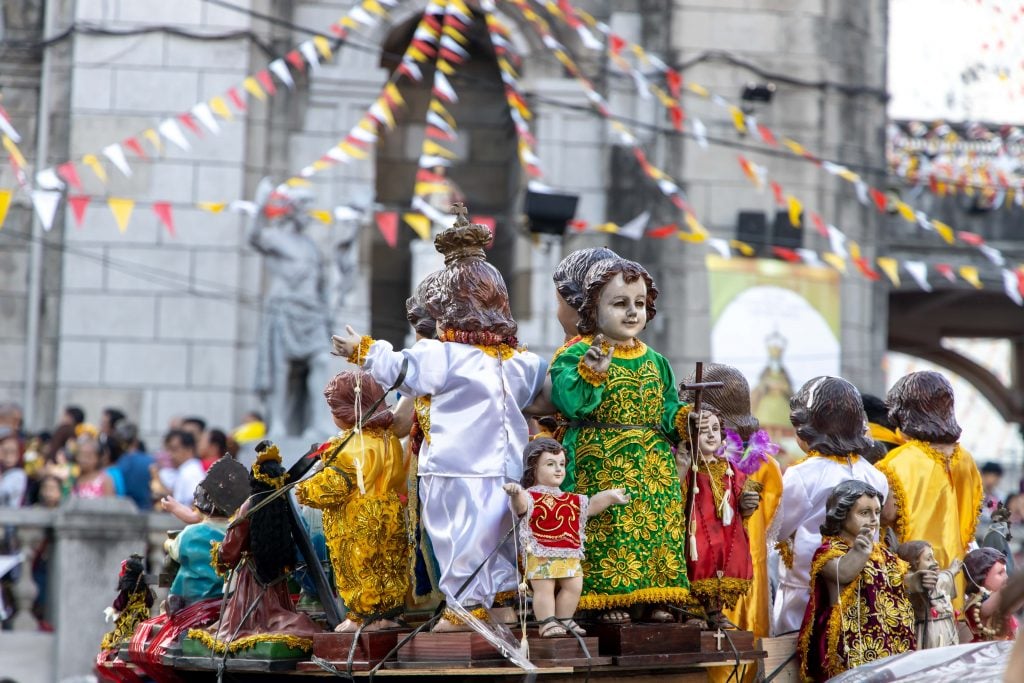
Who doesn’t love attending festivals? Be a part of the colorful Pajotan de Sto. Niño Festival, an annual religious fiesta held every last Sunday of January in Maypajo, Caloocan City. This grandiose affair is highlighted by the magnificent procession of the different images of Sto. Niño and fun-filled street dancing. The festival got its name from pajotan, a small but sweet local variety of mango found in Maypajo. It is the Filipinos’ way of celebrating the bountiful grace from Jesus Christ while showcasing the rich culture and tradition of Caloocan. Enjoy the beat of the music, dance with the locals and taste the mouthwatering traditional Filipino cuisines shared by the community. The cultural event is punctuated by a beautiful firework display over the church pavilion at night.
4. Book a Quick Getaway in Pool Resorts
Do you want to treat your family to a weekend of fun and relaxation without going out of the city? Caloocan has a lot of kid-friendly pool resorts that are perfect for a quick weekend bonding and respite from work stress. One of these is Gubat sa Ciudad Resort in Bagumbong, a great venue for birthday celebrations, company outings, work seminars, retreats, campings, team buildings, family reunions and other social events. This recreational resort has seven swimming pools of varying depths and sizes which also include water slides for an added thrill. Sports enthusiasts can use the basketball and volleyball courts for friendly games while kids can enjoy the tree houses and playground. There are also other amenities such as air-conditioned rooms, cottages and hall pavilion.
Another option if you are in Bagumbong area is the Villa Celedonia Valley Resort which has three swimming pools, children’s park, cottages, basketball and tennis courts. Both day and night swimming are offered at an affordable price.
You may also check out Luzviminda Resort, a famous attraction in Deparo, Caloocan City known as the Home of the Castlesliders because of its unique water slides linked to the castle towers. This fun, colorful and circus-like resort also has two swimming pools, gazebos, cottages, air-conditioned rooms and cozy restaurant. Other amenities include basketball court, nipa huts and karaoke place.
If you prefer a nice vacation near Amparo, you can go to Grogun Health Resort, a private resort that has two swimming pools and slides.
5. Visit The La Mesa Watershed And Eco Park
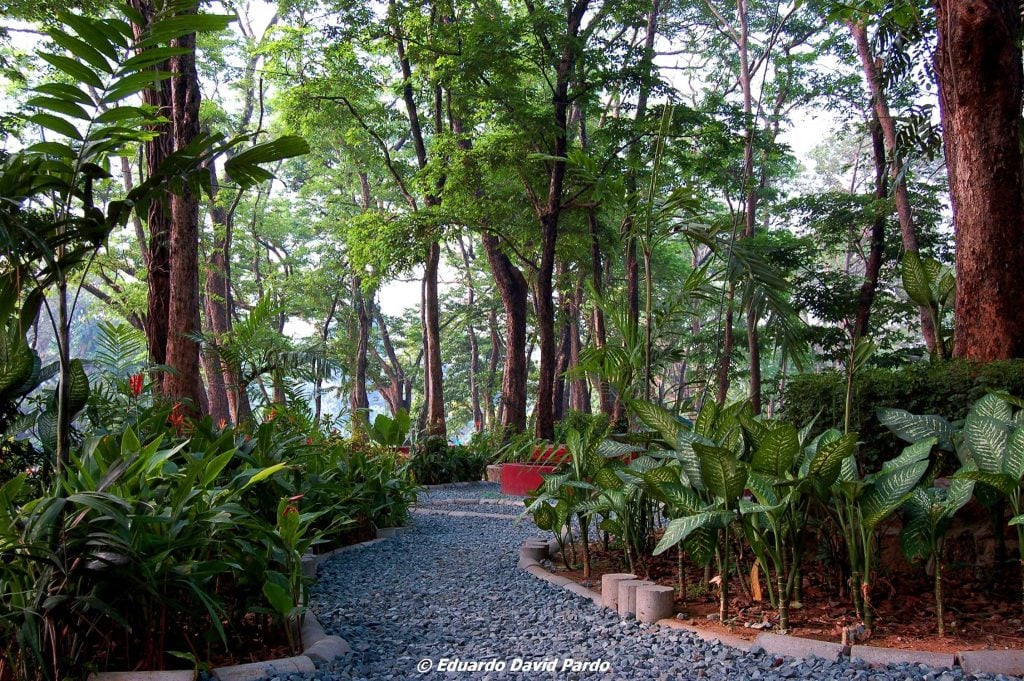
One popular site that stretches from Quezon City, Caloocan City and the town of Rodriguez in Rizal is the La Mesa Watershed and Nature Reserve. Considered as the last tropical rainforest of its size in the metropolis, the 2,659-hectare green paradise plays a very significant role in the Philippines because it serves as the home of a dam that gives drinking water to more than 12 million people from Metro Manila. Dubbed as the green lung of the metro, it also provides the city its much-needed fresh air as it absorbs some of Manila’s carbon dioxide emissions.
Because of its huge impact on the residents, efforts are made to rehabilitate and save the watershed through environmental projects. And these re-greening programs are not in vain because the La Mesa Watershed and Eco Park continues to flourish, attracting thousands of visitors who want to witness its lush wildlife with rich flora and fauna.
An ideal place for those who love the outdoors, this recreational site will let you and your family experience nature at its finest. This is also a staple venue for educational field trips among students to start environmental awareness and advocacy at a young age.
If you want to escape the hustle and bustle of the city, spend the day in this exquisite nature park, which also houses various tree and bird species. Some of the activities that you can enjoy here are bird-watching, fishing, swimming, picnics, hiking and mountain biking.
6. Have a Picnic at Caloocan Nature Park
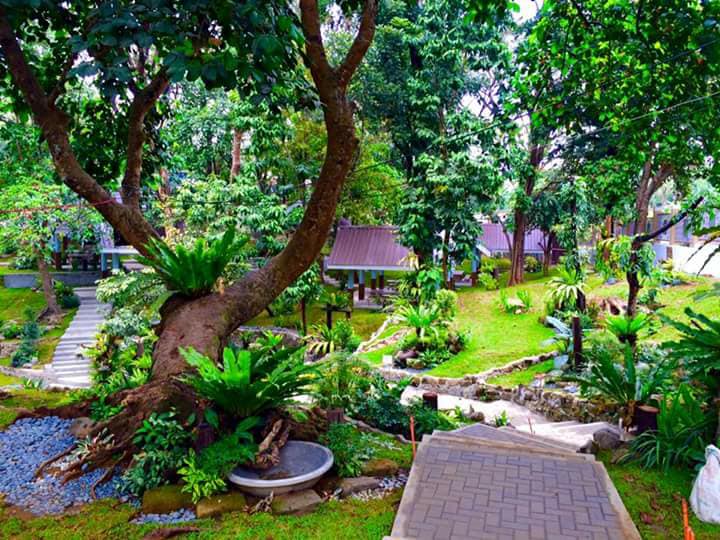
Nature lovers would also love to take a peaceful stroll in the Caloocan Nature Park in Amparo Subdivision while looking at the heritage trees such as Narra, Dita, Antipolo and Tangisang Bayawak. Why not invite your family or friends for a lovely picnic over the weekend? The two-hectare park has 14 cabanas or picnic sheds, hanging bridge, adult and kiddie pools, shower rooms, dressing rooms, function rooms and a hall-type function room.
7. Know the Other Notable Landmarks
La Loma Cemetery, the oldest cemetery in Manila that springs from the Spanish period, can be found in the border of Caloocan and Manila. It first opened in 1884 as a burial ground for Catholics. The cemetery was also home to an abandoned place of worship: the Church of San Pancracio and after being bombed during the war, the parish was installed in a new location outside the gates of the cemetery. La Loma Cemetery also became a Japanese execution site during World War II. A Japanese artillery gun was set up inside the cemetery during the war and still remains there.
Caloocan also houses the Tala Leprosarium, which is now called Dr. Jose N. Rodriguez Memorial Hospital (DJNRMH), established in 1940 to look after the patients who suffer from Hansen’s disease in Luzon. It is the oldest leprosarium in Asia.
The century-old Thai To Taoist Temple Pagoda was built by the Chinese near the 5th Avenue LRT Station, Caloocan City. It is a remarkable landmark and a sacred place of worship, signifying the growing Chinese community in the city.
At the corner of M. Hizon and C. Apostol Streets is a famous landmark with an impressive foreign architectural design. It is known as The Horace Higgins Hall – Philippine National Railways (PNR), which was a former warehouse and historical site of the first ever train trip way back in 1892.
Indeed, Caloocan is a place that had major contributions to Philippine history. It witnessed how our great heroes fought for the independence of our country during the colonial periods, a chapter that shaped it into the city that it is now. In the present, this historical city has grown into a preferred settlement among people from the metropolis because of its growing industrial and commercial centers as well as its big residential area. Not to mention, this highly urbanized city is rather close to the Philippines’ capital, Manila. How does buying an affordable condo in Caloocan as an investment sound to you? Interesting, right? Read on.
Ready to own an affordable condo in Caloocan?

Discover the new side of Caloocan City with Camella Manors. Located in the progressive area of Camarin Road in North Caloocan, this 5-tower residential property that has its own commercial complex is ideal for those who are searching for a holistic and convenient condo living experience.
Camella Manors Caloocan takes pride in being the first mixed-use condo development in North Caloocan, changing the landscape of real estate in Metro Manila. It also features functional amenities such as swimming pool, clubhouse, function hall, fitness gym, playpark, jogging path and garden roofdeck. 24/7 security is provided to maintain a safe space to live.
Accessible to lifestyle centers and business hubs in the city, this condominium is also close to major establishments within the area. Camella Manors Caloocan is only 2 minutes away from Caloocan City North Medical Center, 10 minutes away from SM City Fairview and Ayala Fairview Terraces and 10 minutes away from National University Fairview and Our Lady of Fatima University-Lagro.
Once the railway project is finished, it will just be 15 minutes away from the Mindanao Avenue Station of MRT-7, that connects North Avenue in Quezon City to San Jose del Monte, Bulacan.
Choosing Camella Manors Caloocan is a good investment decision because it is nestled in one of the most populous cities in the Philippines, making its market value potentially high.
Available units are the 23.76-sq.m. studio, 28.55-sq.m. studio and 30.36-sq.m. one bedroom-type units. You can make your first downpayment on March 31.
For more information and inquiries, please click here to visit the official website of Camella Manors.

